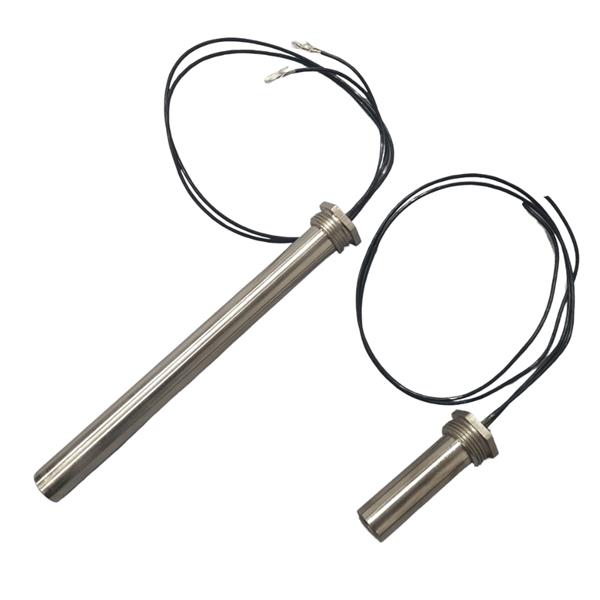
The normal upper limit of the process temperature is 35°C. It is
possible to raise this up to 65°C by means of a heater pack (higher
temperatures can be achieved, following discussion with an ATC salesperson). Heater
packs are typically installed into chiller systems where it is necessary to
maintain a specific temperature range, and the cooling capacity of the chiller
alone is not sufficient to achieve the desired range.
When the system detects that the temperature of the fluid is
lower than the desired setpoint, the heating element is activated, which then
heats the fluid to the desired temperature.
The heating element works by passing an electric current
through a resistive material , typically made of a metal alloy like stainless
steel, that has a high resistance to electrical current flow. The electrical
energy is converted into heat as it passes through the resistance wire. This
heat is then transferred into the fluid flowing around the heating element.
The benefits of using a heater pack include:
Temperature control above the normal temperature range
- The heater pack allows the chiller unit to maintain a specific temperature range
Increased efficacy
- With a heater pack, a chiller can heat and cool fluids more effectively, and with better control, as the chiller is able to maintain the temperature of the fluid with a smaller temperature differential, reducing workload on the compressor.
Versatility
- A chiller with a heater pack can provide both cooling
and heating capabilities, making it a versatile solution for many different
applications.
Cost savings
- By using
a chiller with a heater pack, you can avoid the need for separate heating and
cooling systems, which can be more costly to operate and maintain.
Improved product quality
- With
precise temperature control provided by the chiller, products and processes are
not negatively affected by temperature
variations, resulting in higher product quality and consistency.
While using a heater pack can provide
several benefits, there are some potential drawbacks to consider as well:
Higher energy consumption
- Addition
of a heater pack can increase the energy consumption of the unit, resulting in
higher running costs.
Maintenance
- Heater packs add additional components to the
chiller which require regular maintenance, such as cleaning and inspection, to
ensure that there are no issues or leaks.
Limited heating capacity
- The
heating capacity of this heater pack is limited to 65°C. It may not be
sufficient for applications requiring high levels of heating. Options for heating to higher temperatures
than 65C are available on most ATC units.
Higher upfront costs
Adding a heater pack to a chiller system can
increase the initial cost of the system.